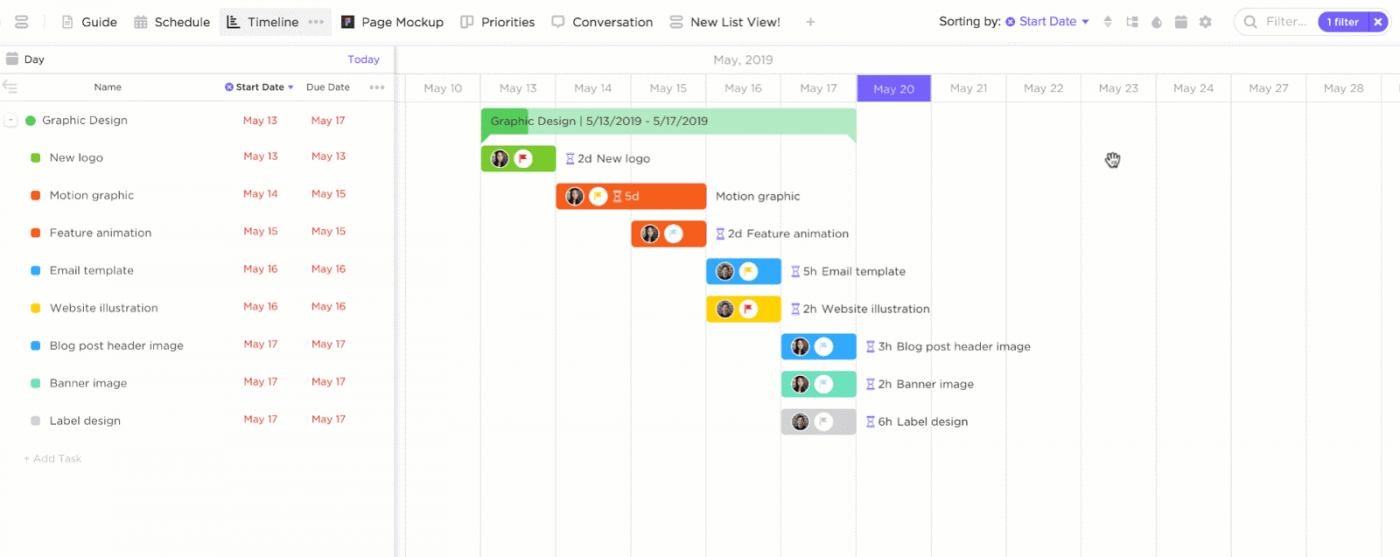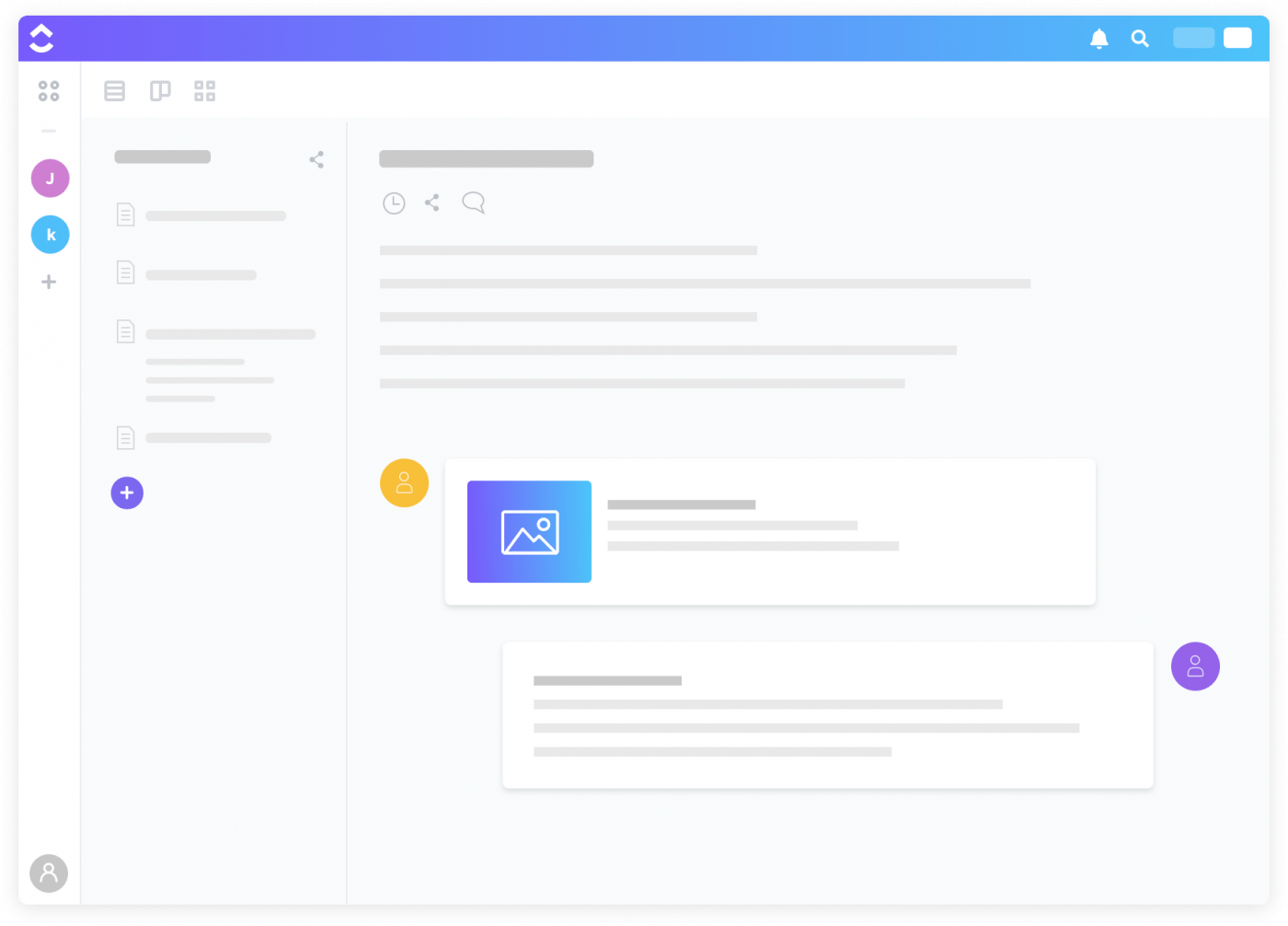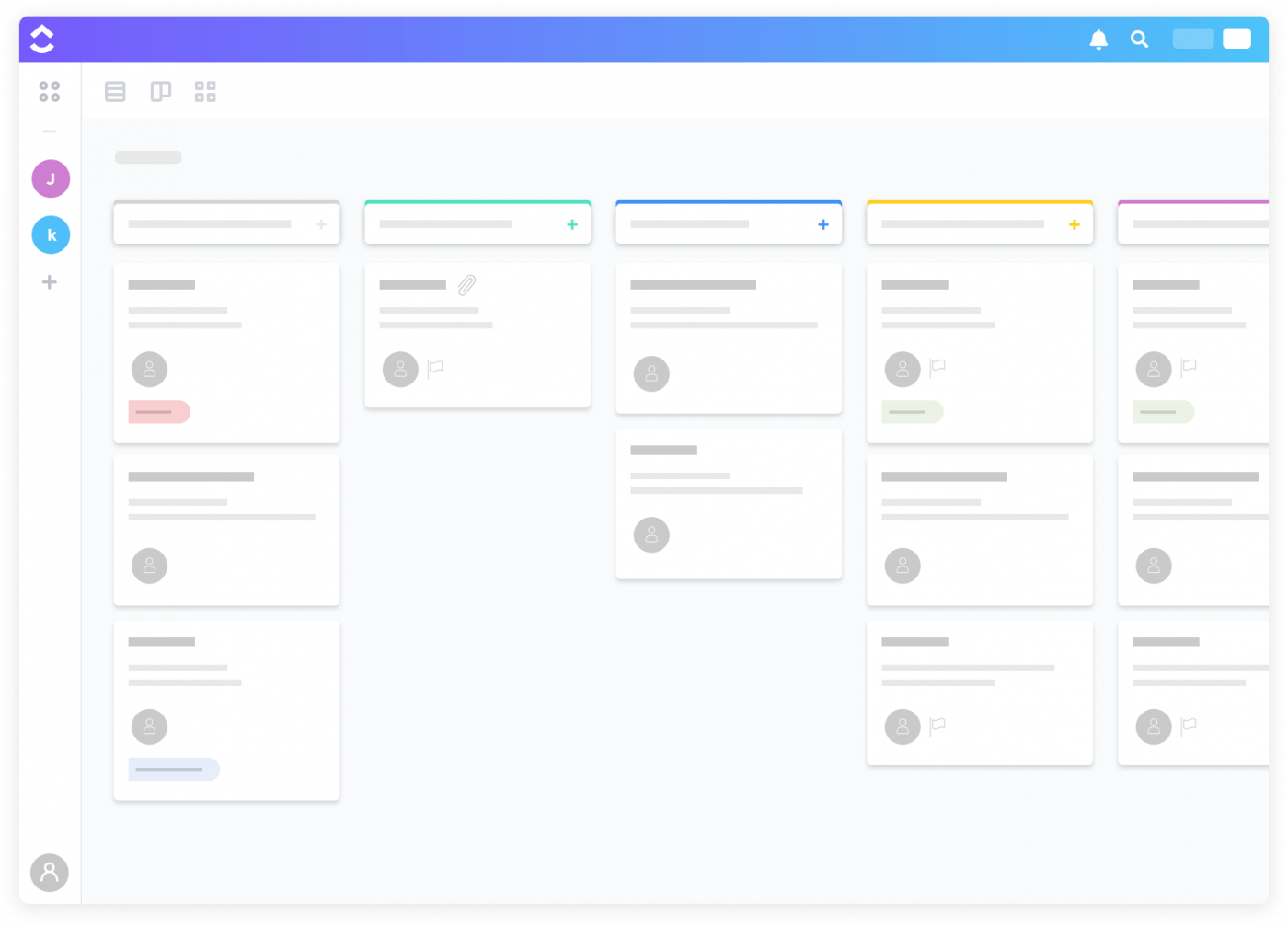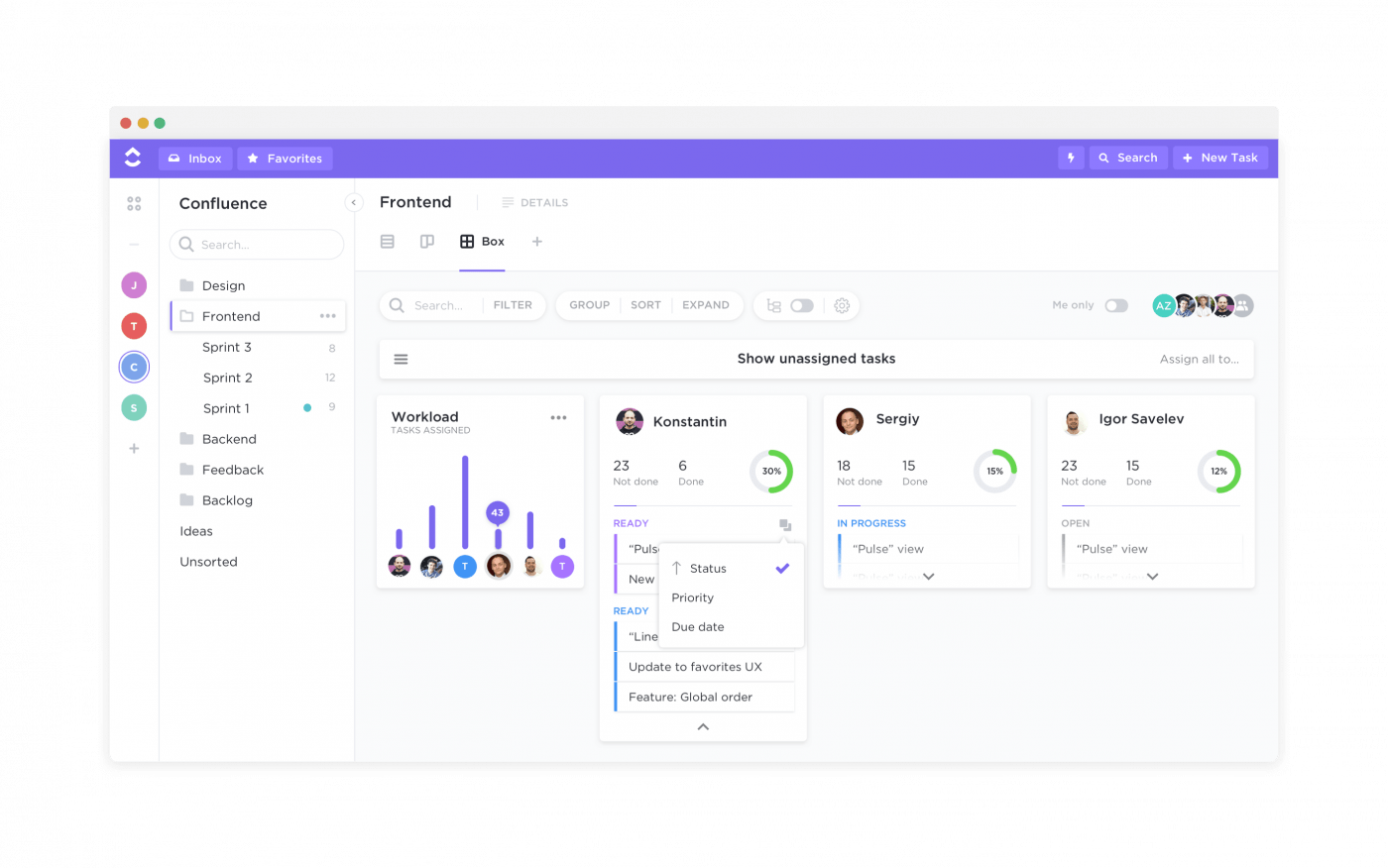هل تريد أن تتعرف على المبادئ السبعة الخالية من الهدر؟ وكيف تستخدمها عملياً؟
لقد جئت إلى المكان الصحيح.
في هذه المقالة، سنشرح كل مبدأ بعبارات مبسطة ونوضح لك كيفية تطبيقه على عملية تطوير البرمجيات الخاصة بك.
لنبدأ.
نبذة مختصرة عن مبدأ اللين والتصنيع اللين
بدأ التصنيع المرن من قبل شركة تويوتا في السبعينيات. وكان التركيز الكامل للتصنيع المرن هو الحد من الهدر. وبدلًا من استخدام العمال كتروس في خط التصنيع، فإن نظام تويوتا للإنتاج المرن كان يركز بشكل كبير على القضاء على أي نوع من الهدر في عملية صناعة السيارات.
وبمجرد دراسة وتقييم عملياتهم، وجدوا هذه الأنواع الثلاثة من الهدر:
الهدر: وهي أي إضافات لا فائدة منها ولا تضيف أي قيمة. بعض الأشياء لا تضيف أي قيمة ولكنها ضرورية مثل اختبار المنتج. وقد تكون بعض الإجراءات الأخرى رائعة ولكنها لا تضيف أي قيمة نهائية للعملاء.
المرونة: يجب أن تكون الأساليب والتقنيات اللينة متساوية في العمل بين جميع الأطراف ولا يجب أن ينتظر أحد أو أن يكون هناك تكدس في العمل. إن جرد الأجزاء والموارد والمنتجات يجب أن تكون الكمية المناسبة التي تم إنشاؤها بواسطة الكمية المناسبة من الموظفين في الوقت المناسب
موري: يشير هذا إلى الموظف المثقل بالأعباء. يجب أن يتعامل كل فرد في الفريق مع عبء عمل بنفس الحجم وأن يكون لديه الوقت الكافي لإعادة تنشيطه. وينبغي إدارة سير العمل لمراعاة ذلك.
إن القول بأن مفهوم منهجية التطوير هذا قد نجح وحسّن من أرباحهم النهائية هو تقليل من شأنهم. لقد ازدهرت أعمالهم وازدهرت جميع منافسي تويوتا تبنوا منهجية مماثلة .
تم تطوير هذه المبادئ والأساليب بعد ذلك من أجل عالم تطوير البرمجيات . كتب توم وماري بوبنديك دليلاً شاملاً حول تكييف هذه الأساليب والمبادئ الخاصة بالليونة مع منهجية تطوير البرمجيات .
لقد فهموا أن الهدف النهائي للمنهجية المرنة هو السعي بلا هوادة وراء القيمة على كل شيء آخر. وقد أدى ذلك إلى تحقيق قيمة للشركة وقيمة للعميل. كانوا يعتقدون أن هذا النهج في تطوير البرمجيات يزيد من القيمة لكلا الطرفين.
المكافأة:_ أدوات تطوير البرمجيات
المبادئ السبعة لللين
في حين أن هذه المفاهيم السبعة للمرونة ترتبط بشكل عام بما يلي التطوير الرشيق و Scrum، فهي أيضًا ذات صلة بإدارة المشاريع المرنة.
تعلم _الفرق بين الرشيقة والمرنة ._
في الواقع، تحمل هذه المفاهيم المرنة قيمة لكل من منهجية المشروع التي تستخدمها. سواء كانت Waterfall، أو PRINCE2، أو GTD - يمكن لأي مؤسسة البدء في التعلم من هذه المفاهيم السبعة الإرشادية المرنة.
دعنا نلقي نظرة فاحصة على كل منها:
1. القضاء على الهدر
يؤكد الإنتاج اللين على التخلص من أي شيء لا يقدم قيمة للمنتج النهائي. يجب أن يكون التخلص من هذه الأنشطة والعمليات المهدرة على رأس قائمة مهامك في الإدارة الرشيقة .
وقد حدد نظام تويوتا للإنتاج المرن الأصلي هذه الأنواع من النفايات الشائعة:
- الإنتاج الزائد: الإنتاج الزائد أو قبل الحاجة إليه.
- النقل غير الضروري: النقل غير الضروري من مكان إلى آخر مما يعرضها للتلف دون سبب.
- المخزون: يضيف تخزين المخزون تكلفة إضافية، فالمخزون الزائد يستهلك مساحة ويؤخر الابتكار.
- الحركة: حركة العمال التكرارية غير المنتجة على أرضية المتجر.
- العيوب: مشاكل الجودة التي تؤدي إلى إهدار الوقت والديون التقنية في إعادةعملية التصنيع.
- الإفراط في المعالجة: استخدام التكامل المستمر والتكرار غير الضروري للقيام بعمل لا يحتاج إلا إلى أدوات بسيطة.
- الانتظار: الفترة الزمنية التي يجب أن يظل فيها المخزون خاملاً بين أي خطوات ذات قيمة مضافة مثل حلقات التغذية الراجعة.
المكافأة:_
_/مرجع/ مدونة؟ p=67944_ برنامج جدولة الإنتاج *%! انقر فوق هو الأفضل في العالم برنامج مجاني لإدارة المشاريع . تستخدمه الشركات الكبيرة و فرق الشركات الناشئة في جميع أنحاء العالم، فهو يحتوي على كل ما تحتاجه لإدارة مشاريعك بفعالية. فيما يلي بعض ميزاته القوية لمساعدتك في تطبيق مبادئ الإدارة المرنة:
- طرق العرض المخصصة
- الحالات المخصصة
- حقوق الوصول المخصصة
إليك كيف يمكن أن يساعدك ClickUp في التخلص من الهدر:
المسار الحرج للمشروع هو ميزة تساعدك على تحديد المهام الأكثر أهمية لإكمال المشروع. وهي تتيح لك التركيز فقط على هذه المهام الأساسية مع تجاوز أي مهام غير مهمة.
لذلك فهي عنصر أساسي في أي استراتيجية للتخلص من الهدر. تساعدك خاصية الإدارة المرئية هذه على تجريد مشروعك من المهام الحيوية - وإزالة أي مهام زائدة وغير ذات صلة على طول الطريق.
تأتي ClickUp مع مخططات جانت المدمجة التي يمكنها حساب المسار الحرج لمشروعك تلقائيًا. مع مخططات جانت البيانية في ClickUp، سيكون لديك إمكانية الوصول إلى أفضل ميزات الإدارة المرئية. وهذا يساعدك على مواكبة جدول التصنيع وإجراء تغيير سريع للقضاء على أي أنشطة مهدرة.

يأتي ClickUp أيضًا مزودًا بخرائط ذهنية مدمجة لمساعدة فريقك على وضع أفكار فعالة. يمكنك التخطيط بدقة لنطاق المشروع باستخدام هذه الخرائط الذهنية - مما يساعدك على التخلص من أي أنشطة مهدرة على طول الطريق.
الإدارة الفعالة للموارد هي جوهر جميع العمليات المرنة. يجب عليك التأكد من استخدام مواردك على أفضل وجه ممكن في جميع الأوقات. مع برنامج ClickUp عرض الصندوق, يمكنك القيام بذلك مباشرة من لوحة التحكم الخاصة بك.
يمكن لمديري المشاريع استخدام طريقة عرض الصندوق لمعرفة ما لدى كل عضو في الفريق:
- مكتمل
- يعمل عليه حاليًا
- سيعمل عليه
إنها طريقة سهلة لتقييم عبء عمل فريقك والتأكد من أنك تستخدم مواهبهم بفعالية.
2. بناء الجودة في
تسعى منهجية اللين إلى تطوير الجودة بطريقة منضبطة ومنضبطة.
لماذا؟
لأنك عندما تحاول إضافة الجودة إلى منتج ما دون أي هيكلية، يمكن أن تخلق أطنانًا من الهدر. على سبيل المثال، الاختبار المفرط والسجلات المفرطة هي منتجات ثانوية شائعة لدورة حياة تطوير البرمجيات الصارمة التي لا تقدم أي قيمة للمنتج النهائي.
تطبيقه على تطوير البرمجيات المرن
تطبيق منهجية التطوير هذه على دورة حياة تطوير البرمجيات ليس بالأمر الصعب. بعض البدائل الشائعة لتطوير البرمجيات المرنة لبناء الجودة هي
- البرمجة المزدوجة: تنطوي على جعل اثنين من المطورين يجمعان مهاراتهما ويعملان معًا علىمتطلبات المشروع.
- التطوير القائم على الاختبار: يتضمن ذلك وضع إرشادات ومقاييس للمطورين قبل البدء في أي عمل. على سبيل المثال، وضع معايير للتعليمات البرمجية قبل كتابتها فعليًا لبرنامجك.
- الاختبار الآلي: يمكن للاختبار الآلي أن يلعب دوراً كبيراً في التخلص من أي عمليات يدوية معقدة قد يجد البشر صعوبة في القيام بها. كما يمكن للاختبارات والعمليات المؤتمتة أيضًا تسريع المهام الإدارية المملة بسهولة.
كيف يساعد ClickUp في تطوير الجودة: الأتمتة الإدارية
الموضوع الشامل لـ "بناء الجودة" هو أتمتة العمليات منذ البداية. بمجرد اختبار العمليات أو مهام سير العمل والتحقق منها، حاول أتمتتها على الفور.
في ClickUp، يمكنك أتمتة مهامك بشكل أسرع باستخدام القوالب , قوائم المراجعة والوقت التقديرات لمساعدة عملياتك على العمل بشكل أسرع.

3. إنشاء المعرفة
تؤكد المنهجية المرنة على إنشاء وثائق لكل مرحلة من مراحل العملية. ستكون هذه المعرفة مفيدة للغاية في تدريب الفرق المستقبلية على العمل على هذه المهام بفعالية. وهي أيضًا طريقة جيدة للفريق للتفكير فيما يقومون به وتحسين أي أنشطة ضعيفة الأداء.
تطبيقه على عملية تطوير البرمجيات
يمكن أن يتضمن إنشاء المعرفة تخزين المعلومات الخاصة بك في أداة ويكي أو مستودعات التعليمات البرمجية مثل جيثب أو GitLab . مع وجود هذه الأشياء، يمكن لفريقك تخزين النتائج التي توصلوا إليها بسرعة وإتاحتها للمطورين الآخرين الذين قد يعملون على مشاريع مماثلة.
كيف يساعد ClickUp في إنشاء المعرفة: المستندات
مستندات ClickUp هي أداة ويكي قوية لوثائق شركتك. يمكنك تخزين مستندات المشروع الحيوية إلى جانب مساحات المشروع الخاصة بها لضمان سهولة الوصول إليها. يمكنك حتى تداخل الصفحات داخل هذه المستندات لجعل تصنيف معلوماتك أكثر بساطة.

فيما يلي بعض الميزات المفيدة الأخرى لمستندات ClickUp Docs:
- استخدم خيارات تنسيق النص المنسق لإنشاء مستندات مفصلة.
- تحرير حقوق الوصول إلى كل مستند لمزيد من الأمان.
- إمكانية مشاركة المستندات بشكل عام. يمكن استخدام ذلك لإنشاء خارطة طريق يمكن الوصول إليها بسهولة عبر الإنترنت لعملائك حتى تتمكن من الاستمرار في الحصول على تعليقات مستمرة.
- يمكنك أيضًا السماح لـ Google بفهرسة مستنداتك لضمان ظهورها في نتائج البحث.
4. تأجيل الالتزام
يؤكد تأجيل الالتزام على الحفاظ على خطط المشروع ومتطلبات مرنة بما يكفي للتكيف مع أي تغيير غير متوقع يحدث. اترك جميع القرارات التي لا رجعة فيها إلى النهاية - بعد أن يكون كل شيء آخر قد تم تحديده بالفعل. يتيح لك ذلك العمل من خلال سيناريوهات متعددة قبل اختيار السيناريو الذي يناسب عملك بشكل أفضل.
تطبيقه على عملية تطوير البرمجيات
استخدام نهج سبرينت مستوحى من نهج سبرينت الرشيق لتطوير المنتج طريقة جيدة للتعامل مع هذا الأمر. إنها رائعة في ذلك لأنها تسمح للفرق بـ
- تقشير جزء معين فقط من الميزة.
- تحليل أهميتها.
- اتخذ قرارًا بشأن ما إذا كان ينبغي تطويرها في ذلك السباق السريع أم لا.
كيف يساعدك ClickUp: إعداد سباقات السرعة
لإعداد سباقات السرعة في ClickUp، قم بإعداد قوائم فردية ضمن المشاريع. يجب أن تمثل كل قائمة سباقًا فرديًا مع قائمة إضافية بعنوان "الأعمال المتراكمة" هذا هو المكان الذي يمكن فيه إدراج الميزات والمتطلبات الجديدة. تحتوي القوائم أيضًا على تواريخ البدء والانتهاء لالتقاط جميع مهام فريقك ضمن تلك القائمة. انتقل هنا لمعرفة المزيد حول كيفية استخدام السباقات في ClickUp .

5. تسليم سريع
يأتي تقديم العمل السريع بكفاءة في طليعة جميع الأنشطة المرنة. ومع ذلك، يجب أن تكون هذه السرعة في إنجاز البرامج مستدامة على المدى الطويل حتى تكون فعالة حقًا.
تقع معظم شركات البرمجيات ضحية لأحد هذه السيناريوهات المهدرة للوقت والمستنزفة للكفاءة في تطوير المنتجات:
- إهدار الكثير من الوقت في التفكير في الخطط المستقبلية وممارسات تطوير البرمجيات التي قد لا تكون ضرورية.
- عدم استجابة مطوري البرمجيات للتغذية الراجعة والعوائق والعقبات التي تعترض المشروع على الفور.
- محاولة الإفراط في تحسين وتطوير الخطة أو الحل بشكل مبالغ فيه.
تطبيقه على عملية تطوير البرمجيات
لكي تتقدم أنشطة تطوير منتجك بسلاسة، يحتاج مطورو البرامج لديك إلى اتباع خطوات البرمجة القصوى الثلاث التالية
الخطوة 1: بناء حل بسيط ومباشر.
الخطوة 2: قم بعرضه على عملائك.
الخطوة 3: استخدم رؤى العملاء لإجراء أي تغيير وتحسين تدريجي.
إذا اتبع مطورو البرامج لديك كل هذه الخطوات، فلن يواجهوا أي مشكلة في تحديد أولويات الأنشطة الصحيحة وإنجاز الأمور بسرعة.
كيف يساعدك ClickUp على التسليم السريع:
الأولويات يمكن أن تظل أنشطة فريقك على المسار الصحيح مع أولويات ClickUp. يمكنك بسهولة إضافة أولويات لكل مهمة للسماح لفريقك معرفة أي منها مهم. جميع أولويات ClickUp تأتي مع رمز لوني قياسي:
- أحمر: عاجل
- أصفر: أولوية قصوى
- أزرق: أولوية عادية
- رمادي: رمادي: أولوية منخفضة
نظرًا لأن رمز اللون هذا قياسي في جميع مساحات مشروعك، سيتمكن فريقك دائمًا من تحديد المهام الأكثر أهمية بسهولة. يمكنهم حتى تصفية مهامهم حسب الأولوية لمحاولة تنفيذ المهام الأكثر أهمية أولاً.

6. احترم الناس
لسوء الحظ، غالبًا ما يتم تجاهل هذا المبدأ لاستيعاب عقلية الفوز بكل التكاليف التي يمكن أن يخلقها تفويض "التسليم السريع".
تؤكد التنمية اللينة على معاملة كل عضو من أعضاء الفريق باحترام وتعاطف. يجب أن يمتد هذا المبدأ ليشمل جميع جوانب تفاعلاتك التنظيمية -
- التوظيف
- التأهيل
- حل النزاعات
- تخطيط المشاريع
- تحسين العمليات
يجب أن تسترشد كل عملية من عمليات التطوير المرنة هذه بمحادثة محترمة واستباقية تشجع على الدعم والمنافسة الصحية.
تطبيقها على منهجية تطوير البرمجيات
يعتقد بوبنديكس أن عملية التطوير المرن لحوكمة تكنولوجيا المعلومات هي الأسلوب الأنسب والأكثر فعالية في الإدارة المرنة. يجب عليك تحفيز ودعم فرق التطوير لديك - وليس محاولة السيطرة عليها.
فالإدارة المرنة تشجعهم على التعبير عن مخاوفهم وحل مشاكلهم في جو عمل منفتح وداعم قمت بإنشائه.
كيف يساعدك كليك أب في الحفاظ على الاحترام:
التعليقات المعينة والملفات الشخصية
الطريقة الأكثر فعالية لضمان الاحترام بين مهندسي البرمجيات هي وجود قنوات اتصال فعالة. فهي تقلل من النزاعات وتمنح أعضاء فريقك منفذاً للتعبير عن أنفسهم بشكل مريح لبعضهم البعض.
يأتي كل مشروع ClickUp مزوداً بأقسام تعليقات قوية لمساعدة فريقك على حل الاختلافات والتعاون بفعالية. ويمكنهم مشاركة التعليقات النصية والصور والملفات ومقاطع الفيديو لإيصال وجهة نظرهم بسهولة. إنها المنصة المثالية لفريقك للبدء في احترام بعضهم البعض أثناء التعبير عن أنفسهم.
للمساعدة في تعزيز التواصل السريع والفعال بين مهندسي البرمجيات لديك، يأتي ClickUp أيضاً مع التعليقات المخصصة:
كلما احتجت إلى تعيين مهمة لأحد أعضاء الفريق، ما عليك سوى الإشارة إليه في تعليق وتعيينها له. سيتلقون على الفور إشعاراً بذلك حتى لا يتم تجاهلها. والآن بعد أن أصبحت في قائمة المهام الخاصة بهم، يمكنهم البدء في العمل عليها ووضع علامة عليها كمهمة تم حلها عند الانتهاء منها.

هذا يلغي الحاجة إلى التعليقات الزائدة حيث يمكن لمدير المشروع التحقق بسهولة لمعرفة ما إذا كانت المهمة قد تم حلها أم لا. يمكن أن يساعدك هذا أيضًا في الالتزام بمفهوم "القضاء على الهدر" الخاص بمنهجية التطوير المرن.
توفر ملفات تعريف ClickUp لمديري المشاريع نظرة عامة على:
- ما الذي يعمل عليه الأشخاص.
- ما سيعملون عليه.
- ما قاموا به مؤخراً.
- ما هي مهامهم التي لم تتم جدولتها بعد.
إنها الطريقة المثالية لمديري المشاريع لتتبع ما يعمل عليه كل موظف. بالاقتران مع طريقة عرض Box (كما هو موضح أعلاه) يمكنك الحفاظ على توزيع العمل بشكل عادل.
هذا يضمن عدم إرهاق موظفيك والتسبب في الإرهاق أو السخط. هذا مهم للغاية في سياق الاحترام.
7. تحسين الكل
تؤكد كتب مثل كتاب "الشركة الناشئة المرنة" على التفكير في الصورة الشاملة عند العمل بمنهجية المرونة. يجب على أصحاب المنتجات والمساهمين تقييم شركتهم الناشئة وعملياتها ككل قبل إجراء أي تغييرات جذرية.
فالأشياء التي قد تبدو غير عملية من منظور ضيق قد تكون أساسًا لأمور أكبر, عمليات أكثر إنتاجية . الأمر متروك لك لتحديد هذه الروابط ومحاولة تحسين العملية ككل بدلاً من المكونات الفردية.
تطبيقه على منهجية تطوير البرمجيات الفرق متعددة الوظائف هي حل جيد لتحسين الكل. نظرًا لأن كل فرد في الفريق يمكنه التعامل مع الطلبات من البداية إلى النهاية، فهناك آراء متعددة حول المشاكل التي يتم تمثيلها. يساعدك هذا على التفكير في احتياجات عملائك من وجهات نظر مختلفة - مما يجعل من الصعب اختطاف أهداف الفريق.
كيف يساعدك ClickUp:
مشاهدات متعددة تأتي الابتكارات الأكثر نجاحًا عندما تستعين برؤى أشخاص من أقسام مختلفة مثل المبيعات والدعم.
ولمساعدة شركتك على تشغيل مثل هذه الفرق متعددة الوظائف بنجاح، تأتي ClickUp مع وجهات نظر متعددة. سيجد كل فريق من فرقك، سواء كان ذلك - تطوير البرمجيات أو التسويق أو الدعم، طريقة العرض التي تناسب احتياجاته وتفضيلاته.
نظرًا لأن ClickUp يتكيف مع احتياجات كل قسم، فلن تضطر إلى استخدام أدوات متعددة لإرضاء القوى العاملة لديك. وهذا يجعل من السهل توحيد العمل وجعل فريقك يعمل معًا لتحقيق هدف عام مشترك.
إليك نظرة موجزة على كل طريقة من طرق العرض هذه التي تجعل الإدارة المرئية أسهل:
طريقة عرض اللوحة
طريقة العرض هذه مثالية ل فرق SCRUM تستخدم لوحة كانبان. فهي تتيح لهم نقل المهام بسهولة وإجراء التغييرات أثناء التنقل.

عرض القائمة
تساعد طريقة عرض القائمة فريقك على عرض مهامهم وواجباتهم في قائمة على غرار GTD (إنجاز المهام). سيجدون أنه من السهل عليهم التحقق من مهام المشروع والمهام الفرعية أثناء تقدمهم.

عرض الصندوق
تعتبر طريقة عرض الصندوق مفيدة بشكل خاص لتحسين الكل لأنها تمنح الإدارة العليا نظرة عامة على كل ما يجري في مؤسستك. ونظراً لأن المهام مرتبة حسب المكلف، فمن السهل إدارة ما لدى جميع مهندسي البرمجيات لديك والتأكد من وجود توزيع عادل للمهام والواجبات.

وضعي أنا
يعرض "وضعي أنا" المشاريع المخصصة لك فقط. يساعدك هذا على التركيز فقط على واجباتك ومهامك.

الفرق بين منهجية التطوير الرشيقة ومنهجية التطوير المرن
تتشابه منهجية التطوير الرشيق ومنهجية التطوير المرن مع أجايل إلى حد كبير. في الواقع، تتضمن الكثير من عمليات العمل الرشيقة بعض المبادئ المرنة فيها. على سبيل المثال، تقديم نتائج سريعة هو مبدأ أساسي لمعظم فرق أجايل.
ومع ذلك، هناك بعض الاختلافات الواضحة بين هاتين الطريقتين في التطوير. فمن جهة، تعطي أجايل الأولوية للعلاقات بين أعضاء الفريق الواحد. من ناحية أخرى، تركز منهجية التطوير المرن على النظر إلى فريقك ومؤسستك ككل.
ينص بيان أجايل على أن الهدف من فريق التطوير هو التغلب على المشاكل وإنتاج منتج نهائي قابل للتطبيق. وفي حين أن هذا أيضًا هدف في التطوير المرن، يتم التأكيد على أهمية العملية أكثر من المنتج النهائي في فلسفة التطوير المرن.
في حين أن هاتين المنهجيتين تختلفان في بعض النواحي، إلا أن كل من هذه المبادئ يمكن أن تضيف قيمة إلى عمليات عملك. القضاء على الهدر ( منهجيات سيجما الستة الهزيلة ) وتماسك المجموعة (طريقة أجايل) هي سمات إيجابية يمكن أن يستفيد منها أي مشروع. ولتحقيق أقصى استفادة منها، استخدم مبادئ من كل منهجية لتشكيل عملية العمل الفريدة الخاصة بشركتك لإنجاز الأمور بكفاءة.
خاتمة
تُعد المبادئ السبعة الخالية من الهدر مخططًا رائعًا لتحسين إجراءات عملك. إذا اتبعتها بجدية، فستحصل على عمليات مبسطة تضمن الكفاءة والإنتاجية.
في هذه الأثناء، لم لا اشترك في ClickUp واستخدم ميزاته المفيدة للتكيف مع المنهجية المرنة اليوم؟

